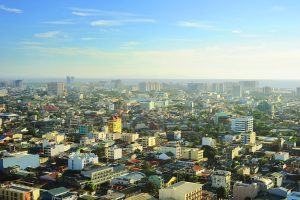Manila, the capital city of the Philippines, is home to over 12 million people and is one of the most densely populated cities in the world. As a result, ensuring that the city has a reliable and sufficient supply of clean water is a critical concern. Unfortunately, Manila’s water infrastructure is under strain and needs significant upgrades. Much of the city’s water supply comes from the Angat Dam, which was built in the 1960s and is now operating at close to capacity. In addition, a significant portion of the city’s water distribution system is old and in disrepair, resulting in water loss and inefficiency.
To address these issues, the Philippine government has embarked on several water infrastructure projects in Manila. These have included the construction of a new dam, the Kaliwa Dam, which is intended to provide an additional water source for the city. In addition, the government is working on upgrading and modernizing the city’s water distribution system, including replacing old pipes and implementing new technologies to reduce water loss. However, these projects are not without a degree of controversy. The construction of the Kaliwa Dam has faced opposition from environmental groups and indigenous communities, who are concerned about the potential impact on local ecosystems and livelihoods. In addition, the cost of upgrading the city’s water infrastructure is significant, and there are concerns about where the funding will come from.
Despite these challenges, improving Manila’s water infrastructure is essential for the city’s future. Ensuring a reliable and sufficient supply of clean water is crucial for the health and well-being of the city’s residents, and the economic development of the region. The Philippine government and other stakeholders will need to work together to address the challenges and find solutions to ensure that Manila has the water infrastructure it needs for the future.
The government of the Philippines has announced plans to address the country’s water crisis by 2030. The country has long struggled with water shortages and poor water quality, particularly in its urban centers. However, the government has now outlined several measures that it hopes will improve the situation. One of the key components of the government’s plan is the construction of new water infrastructure, including dams and reservoirs. This will provide additional sources of water for the country and help to ensure that there is a sufficient supply to meet the needs of the growing population.
In addition, the government is focusing on improving the efficiency of the country’s water distribution system. The goal is to ensure that water is delivered to where it is needed, without being wasted. The government is also prioritizing the improvement of water quality. This includes measures such as upgrading wastewater treatment facilities and enforcing stricter regulations on industrial discharge into waterways. The aim is to ensure that the available water is safe for people to drink and use.
The government is working to raise awareness about the importance of water conservation and the need to use water responsibly. This includes educational campaigns and incentives for households and businesses to reduce their water usage. Overall, the government’s plan to address the water crisis in the Philippines by 2030 is ambitious but necessary. Ensuring that the country has a sufficient and reliable supply of clean water is essential for the health and well-being of its people, and the country’s economic development. If successful, the plan could be a model for other countries facing similar challenges.
As the current water crisis in the Philippines continues to affect millions of people, President Ferdinand Marcos Jr., the son of former President Ferdinand E. Marcos, announced plans to address the issue during his presidential campaign earlier this year. Marcos, who was then senator in the Philippine parliament, outlined several measures that he plans to implement if he is elected. These include the construction of new dams and reservoirs to provide additional sources of water, the modernization of the country’s water distribution system, and the improvement of water quality. One of the key components of Marcos’s plan is the construction of the Chico River Pump Irrigation Project, which he has described as “the biggest water project in the history of the Philippines.” The project, which is currently in the planning stages, would involve the construction of a dam and a series of pumps along the Chico River, which flows through the northern part of the country. The goal of the project is to provide irrigation for agricultural areas and to generate hydropower for the region.
In addition to the Chico River Pump Irrigation Project, Marcos also plans to invest in other water infrastructure projects, such as the rehabilitation of existing dams and the expansion of wastewater treatment facilities. He has also pledged to implement measures to reduce water loss and improve the efficiency of the water distribution system. Critics of Marcos’ plan have raised concerns about the feasibility and cost of his proposed projects, as well as the potential impact on the environment and local communities. However, Marcos has defended his plan, arguing that it is necessary to address the country’s water crisis and to ensure the long-term sustainability of the country’s water supply. Overall, Marcos’ plans to solve the Philippines water crisis are ambitious and potentially impactful, though their success will depend on several factors, including the availability of funding – and the support of numerous other stakeholders.

































